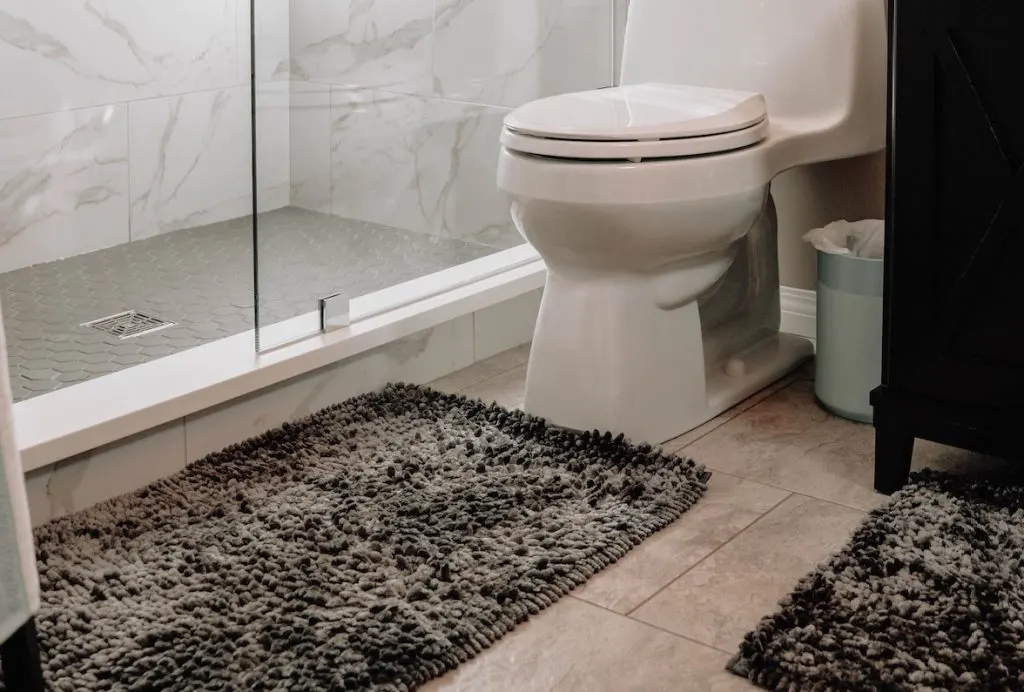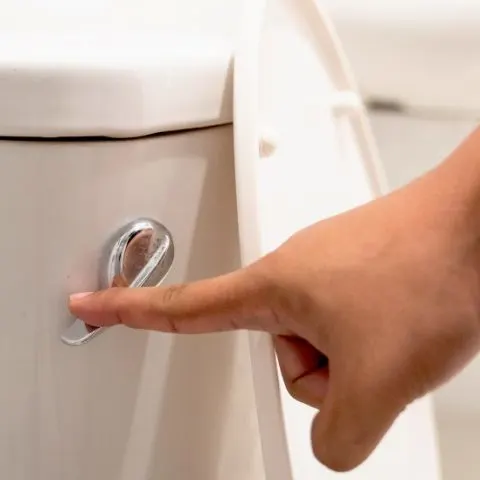A toilet flushing louder than usual is not an uncommon problem; however, the noise can be irritating and alarming. Our lives are filled with too much noise, and having a loud toilet when flushing can disrupt the quietest of moments.
Your toilet makes a unique sound when you flush it; however, it will make a loud and unnecessary noise when it’s not at its best. The great news is that there are several ways to silence a noisy toilet. Read on to learn how to make yours flush quietly.
Why Is My Toilet So Loud When It Flushes?
There are several reasons for a loud toilet when flushing; here are some of them:
Water Is Not Flowing Right
Water not flowing properly into the toilet is the most common problem that may cause loud flushing. When water isn’t flowing into the refill valve, it becomes harder for the toilet to fill up again and get enough water for flushing. This problem can also cause backups and lead to the rupturing of some pipes and other connections.
Seals Are Stiff
The seals inside a toilet might become too loud if they are stiff. The stiffness might be due to excess debris around the seals that inhibit them from managing the flow in an area. When this happens, the added pressure that comes onto the seals will create more noise. Additionally, the pressure might prevent the toilet from being as functional and safe as it should be.
Check this too: How to Unclog a Toilet
Refill Water Stuck at the Bottom
Refill water is helpful because it keeps the toilet running correctly. Sometimes this water goes down the overflow pipe; however, it might get stuck on the pipe’s bottom part.
When refill water gets stuck at the bottom, there is added pressure inside the toilet, making it harder for the water to move out properly. This situation can lead to severe backups if you don’t handle it appropriately.
The Flushing Mechanisms Are Not Aligned Well
The flushing mechanisms that help flush the toilet might not be adequately aligned, making them fail to respond immediately. When this happens, the toilet could stop working correctly because it might become easier for backups to occur if the situation is not handled fast enough.
What Can I Do to Make My Toilet Flush Quietly?
Flushing a toilet quietly is not impossible; you can do it by implementing these suggestions make it flush quietly:
Clean Your Toilet
Cleaning your toilet doesn’t only involve cleaning the toilet bowl. The cistern tank is often to blame if your toilet is flushing louder than usual. Also, if your water is rusty or hard, you will have to keep the cistern as clean as possible.
The minerals found in hard water will gum everything up, including the pipes, valve, flapper, and the holes under the rim. Constricted openings and water lines make more noise because the pressure forces water through tiny holes.

Tighten Pipes
Your toilet might be flushing louder than usual due to clamps and loose fittings around the cistern. You can stop this loud noise by taking a screwdriver and manually checking in and around the cistern for any loose fittings.
Tighten the loose fittings as much as possible; however, be careful not to close the water inlet valve because doing so will stop your toilet from refilling. Visual checks alone won’t be enough; actively move fixtures using the screwdriver to ensure that they are tight enough.
Install a Quiet Fill Flush Valve
A quiet fill flush valve might be the solution if your toilet makes a lot of trickling noise when the cistern is filling up. A quiet fill flush valve uses an outlet pipe to feed the water back into the cistern below the waterline; therefore, you won’t hear anything when it refills.
You don’t have to buy the valve if you have a quiet flush toilet because they come pre-installed. However, if you don’t have this type of toilet, you can always buy a quiet flush valve and install it in your cistern.
Reduce the Amount of Water in the Tank
A noisy toilet flush may be due to a large tank that stores a lot of water. If the water in your toilet can flush solids away quickly, you should consider putting a brick in the cistern. The brick will displace the water helping the cistern fill fully with a smaller volume of water.
A smaller water volume in the cistern means that less water will flow into the toilet bowl to help reduce the loud flush noise and help you save water.
Adjust Water Inflow
The speed at which water refills in the cistern might cause a noisy flush. A lot of water flowing back into the cistern at a fast rate can be noisy. You can adjust the inlet valve to slow down the inlet valve and to reduce noise. However, you should know that the cistern might take longer to fill up.
Block the Sound
You can soundproof your entire bathroom; however, a more straightforward method of flushing your toilet quietly is to soundproof the cistern. You can soundproof it using adhesive foam tape. Follow these steps once you have the tape:
- First, remove the cistern lid; clean the top and inside edges of the cistern.
- Proceed to stick the adhesive foam tape around the top edges of the toilet tank.
- Push the cistern lid back into place. This creates an airtight fit; therefore, the airborne sound won’t travel out.
Check this too: How to Reduce Noise From Upstairs Floors
How Do I Make My Toilet Sound Muffled?
Soundproofing your toilet has probably been in your mind at some point, especially if it’s next to a child’s bedroom, living room, dining room, or anywhere else where you’d rather be discreet. Having a soundproof toilet is not impossible; here is how you can do it:
Hang a Soundproofing Curtain or Blanket Over the Door
Hanging soundproof curtains or a soundproof blanket will help muffle the sounds inside your bathroom. A soundproof blanket is made up of heavy fabric, which is tightly woven, deadening bathroom sounds. Additionally, these blankets do not absorb any smells.
Although soundproofing and deadening aren’t the same thing, the added barrier helps block some bathroom noises.
Install a Door Sweep
If you want soundproofing to work, you should ensure no crevices or gaps from which sound can leak through. For example, a door sweep can cover the gaps under your bathroom door, ensuring that no sound leaks through.
The best thing is that door sweeps are easy to install, affordable, and can keep insects and critters away.
Reinforce Your Toilet Door
Most residential homes have hollow core doors, which leak sounds because they don’t have a mass for blocking noise. Reinforcing mass in your door will soundproof it, making your trip to the bathroom a bit comfortable. If you like DIY projects, you can reinforce your toilet door by doing the following:
- Get some acoustic plasterboard or plywood. If you can source the soundproof ones, your work will be much simpler.
- Cut the acoustic plasterboard or plywood in the exact dimensions as your toilet door.
- Add a hole for the handle.
- Find a tube of green glue and apply it in a random pattern on your board, and stick it to the existing door frame.
- You should note that green glue isn’t an adhesive; it’s a noise dampening product; therefore, you will still have to attach the board to the door using wood glue.
- Purchase a Solid Core Door
If you don’t like DIY projects, purchasing a solid core door might be a better solution for you. However, you might spend between $150 to $400 depending on the wood used and the size of your bathroom door.
Add an Extra Layer of Drywall
Your soundproofing efforts might not work if your walls are thin. It will help to have a thick layer of the wall that insulates all sounds. You can get the 5/8 inches drywall type and add an extra layer to your existing bathroom wall.
Wrap Noisy Pipes With Soundproof Material
Noisy pipes in the bathroom can be due to water flow hammering against a pipe that isn’t securely fastened to the wall. This causes the pipe to vibrate and rattle.
Reducing water pressure can help solve this issue because the noise mostly happens when you turn off the tap abruptly.
Check this too: How to Clean a Badly Stained Toilet
Fill Up Any Cavities Around Plumbing
You can consider filling up the cavities around the plumbing inside of your toilet wall. Filling up cavities adds more mass to dampen any vibrations.
Muffling your toilet sound or having a toilet that flushes quietly helps you to feel comfortable without worrying about other people in the house. Try the tips above to ensure that you have a toilet that flushes quietly.

